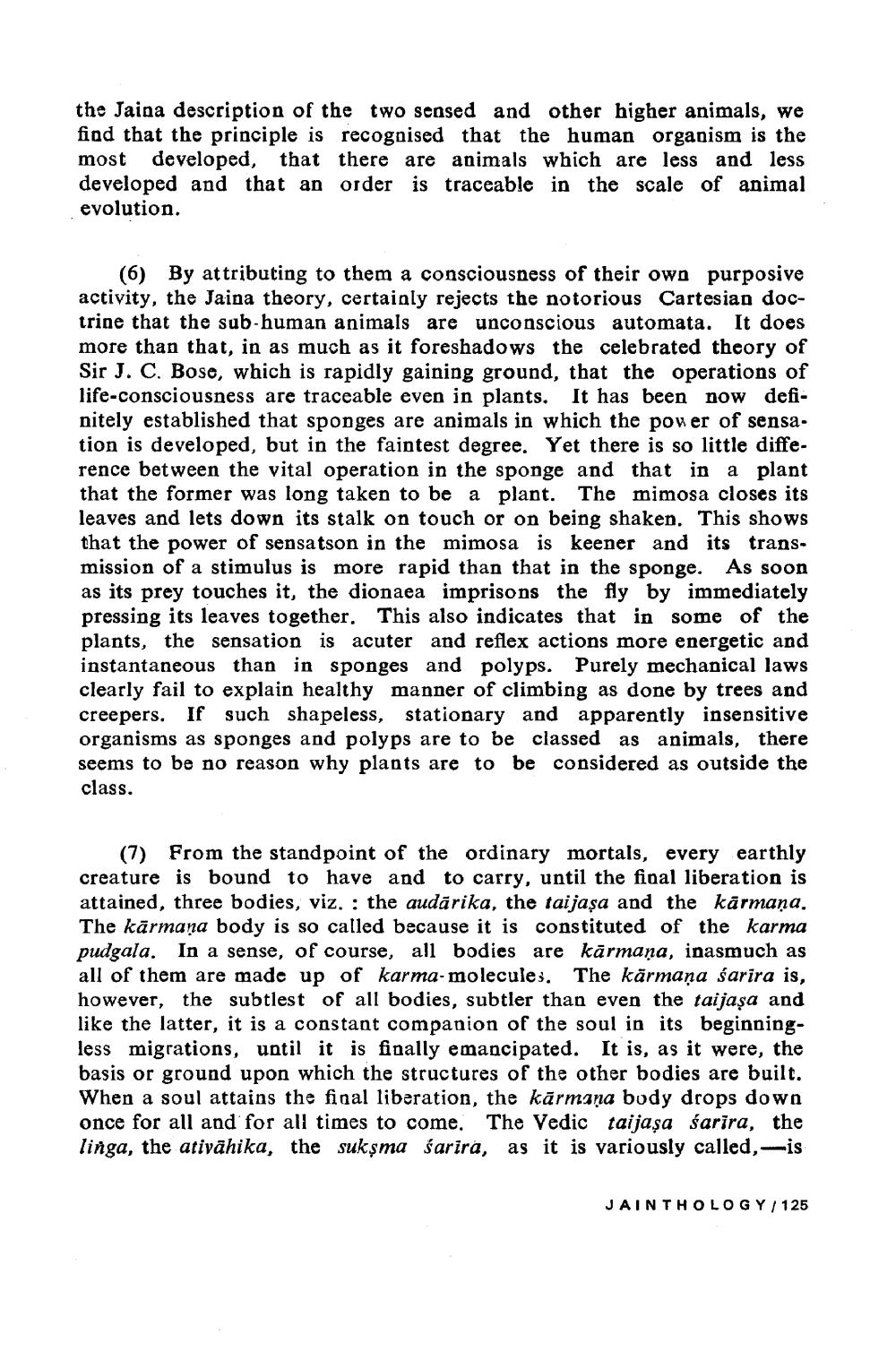________________
the Jaina description of the two sensed and other higher animals, we find that the principle is recognised that the human organism is the most developed, that there are animals which are less and less developed and that an order is traceable in the scale of animal evolution.
(6) By attributing to them a consciousness of their own purposive activity, the Jaina theory, certainly rejects the notorious Cartesian doctrine that the sub-human animals are unconscious automata. It does more than that, in as much as it foreshadows the celebrated theory of Sir J. C. Bose, which is rapidly gaining ground, that the operations of life-consciousness are traceable even in plants. It has been now definitely established that sponges are animals in which the power of sensa tion is developed, but in the faintest degree. Yet there is so little difference between the vital operation in the sponge and that in a plant that the former was long taken to be a plant. The mimosa closes its leaves and lets down its stalk on touch or on being shaken. This shows that the power of sensatson in the mimosa is keener and its transmission of a stimulus is more rapid than that in the sponge. As soon as its prey touches it, the dionaea imprisons the fly by immediately pressing its leaves together. This also indicates that in some of the plants, the sensation is acuter and reflex actions more energetic and instantaneous than in sponges and polyps. Purely mechanical laws clearly fail to explain healthy manner of climbing as done by trees and creepers. If such shapeless, stationary and apparently insensitive organisms as sponges and polyps are to be classed as animals, there seems to be no reason why plants are to be considered as outside the class.
(7) From the standpoint of the ordinary mortals, every earthly creature is bound to have and to carry, until the final liberation is attained, three bodies, viz.: the audarika, the taijașa and the kārmaṇa. The kärmaṇa body is so called because it is constituted of the karma pudgala. In a sense, of course, all bodies are kārmaṇa, inasmuch as all of them are made up of karma-molecules. The kārmaṇa śarīra is, however, the subtlest of all bodies, subtler than even the taijașa and like the latter, it is a constant companion of the soul in its beginningless migrations, until it is finally emancipated. It is, as it were, the basis or ground upon which the structures of the other bodies are built. When a soul attains the final liberation, the karmana body drops down once for all and for all times to come. The Vedic taijașa śarira, the linga, the ativāhika, the sukṣma sarira, as it is variously called,-is
JAINTHOLOGY/125




